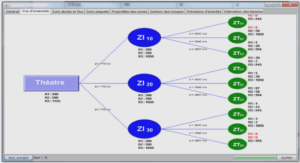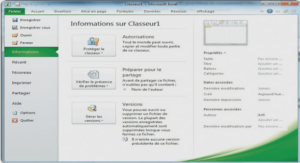INTERNATIONAL CONVENTION TO LOCAL POLICY AGREEMENT
The Republic of Madagascar has signed several conventions and laws, not only because of the adherence of United Nations but also, our biosphere reserve have an immense impact of climate regulatory of the south hemisphere. The objective of these conventions help to define the national strategy and plan to manage environmental area under the scheme of sustainable development , and to preserve endemic natural resources for a wise exploitation. These international instruments are in force at local, national and global levels.
Firstly, the beginning of the international policy of environmental conservation was the conceptual framework defined under international conferences is the UNESCO MAB (United Nations Scientific and Cultural Organization, Man And Biosphere). Since started in 1971, and reviewed in 1995, framework is focused into three concerns: conservation of biodiversity, genetic resources and ecosystems logistics for international network area of research. These findings have followed by the evaluative program made by IUCN (International Union for Conservation of Nature) which concluded important factors to manage Biosphere Reserves such as local community involvement, training and capacity building and information sharing and feedback benefits for locals due to conservation methods.
To have good results to manage biosphere reserves, they should involve local communities to participate in management process, they need training and capacity building and better opportunity for international communities to collect and sharing information among indigenous, and earn benefits for conservation methods.
By the way, the MAB context was the basis of all conservation strategy for the next years such as CBD (Convention on Biological Diversity), the creation of UNEP, the Bruntlandt Report and the Durban Vision. Moreover, due to the lack and critics of this approach, some authors add something new to implement planning and management principles in spatial view of conservation land. The findings of Michel Batisse clarify the specification role of « core area » and the « buffer zone». The « core area »: « should be representative of a major ecosystem of world significance, and be large enough to allow for in situ conservation of the genetic material of this ecosystem ». And divided the « first buffer zone », « around the core and would be used for education and training, as well as for manipulative research on conservation and ecosystem management», and a « second or outer buffer zone is recognized, which then serves as a variety of purposes, including experimentation on alternative land uses, education, training and recreation, and is managed-and possibly reclaimed for the benefit of local population while maintaining a healthy environment.» These definitions remain the geographical network of input of managing protected area.
Secondly, one of the international instruments and agreements that are focused in this paper is the CBD, which was born under the Rio Convention of 1992, and ratified by Madagascar on August 1995. According to the CBD, Art 15 Access to Genetic Resources stipulated on alinea 4: « access, where granted, shall be on mutually agreed terms and subject to the provisions of this article », and alinea 5: « access to genetic resources shall be subject to prior informed consent of the contracting party providing such resources, unless otherwise determined by that party ». If we understand that local elder people have traditional knowledge of the collect, processes of medicinal and aromatic plant, that some expected foreigners should inform local leader, in practice, in some ways, to inform the Ethnic Head of the village on accessing forest for the reason of exploring and collecting these medical resources.
Thirdly, after the CBD, the next binding agreements that should take into account are the Nagoya Protocol, which is a legal constraint to clarify the role of indigenous people to manage their natural resources. The Art 5 on fair and equitable benefit-sharing on the alinea 1 stipulated that « in accordance with Article 15, paragraphs 3 and 7 of the Convention, benefits arising from the utilization of genetic resources as well as subsequent applications and commercialization shall be shared in a fair and equitable way with the Party providing such resources that is the country origin of such resources or a Party which has acquired the genetic resources in accordance with the convention. Such sharing shall be upon mutually agreed terms », the alinea 2:« Each Party shall take legislative , administrative or policy measures, as appropriate with the aim of ensuring that benefits arising from the utilization of genetic resources that held by indigenous and local communities , in accordance with domestic legislation regarding the established rights of these indigenous and local communities over this genetic resources , are shared in a fair and equitable way with the communities concerned, based on mutually agreed terms.» and on alinea 4:« benefits may include monetary and non-monetary benefits , including but not limited to those listed in the Annex.» This protocol is more specific than the CBD, which clarifies the role of local community under the scheme, that each party have « win win » situation for the utilization of genetic resources. Finally, the Vth World Parks Congress in Durban, South Africa, known as « Durban Vision » creating new management of protected areas systems, where government entities, public private sector, international partner organizations working in conservation and biodiversity in Madagascar.
THE IMPACT OF BINDINGLAW AT NATIONAL POLICY FRAMEWORK
The previous paragraph outlines the international convention which Madagascar was signed and implemented an adaptive legislation under national context. This second section discusses the national context of environmental policy framework.
Historical overview
Even, since the kingdom period, the successive kings was tried to define legislation codes to preserve Malagasy forest (Code of 305 articles of 29 March 1881) and avoided forest destruction due to fire, coal production, drying bamboo and house constructed inside forest area. During the colonial period, forest and environmental legislation have changed, and at this time, they already tried to avoid brushfire, slash and burn practice and the massive exploitation of forest. Due to savage forest degradation, they formulated the existence of classified forest and Natural Reserve Integrated (NRI) that was the beginning of protected area by the decree of 31 December 1928. Which 10 reserves were created for more than 597.000 ha of surface, and it was managed by National Parks and Natural Resources Conservation, until the first republic. Despite the fact that, there was an awareness to preserve environmental ecosystem, the destruction of forest were very strong during the second republic of 1972 due to the adoption of the new way of « neocolonialism». The forests were overexploited that the slash and burn practice touched the rural area, until 1982, which the State published a new model of strategy, the National Strategy of Conservation and Sustainable Development (NSCSD). This policy corresponds with the impact of international convention (UNESCO-MAB) and acknowledged the local community involvement to manage natural resources and protected area.
Environmental and forest policy in Madagascar
Although our ancestors knew the value of the natural forest, almost, more than half of the forest cover was vanished last hundred years due to population growth and the practice of forest clearing. Even a fringe of indigenous people were aware about result of fire processed, they have still practiced traditional method and misuse of the forest.
Since the 1990s, after signing the CBD, and due to pressure of conservation agencies and international institution (IUCN, WWF, USAID and World Bank), the government of Madagascar elaborated the NEAP (National Environmental Action Plan) which divided into three steps, that the first phase started on 1991 which characterized by the creation of specialized institution such as National Office of Environment (NEO) to coordinate the EAP (Environmental Action Plan), the National Association for the Management of Protected Area (NAMPA) to manage protected area and the Association for Environmental Action (AEA) which help soil management. This period also marked by the creation of a few dozen protected areas using ICDPs (Integrated Conservation and Development Project) tools to manage area. To follow implementation of this policy, the state promulgated numbers of law such as the Environmental Charter by decree of 90-033 of 21 November 1990 (this decree was twice modified , law 97-012 of 06 December 1997 and law 2004- 015 of 19 August 2004). This decree defined the environment as one of the prior policy of the State, the main objective was to conciliate population with environment inside sustainable development and specific objectives such as human resources, sustainable development with good natural resources management; restore, conserve and manage Malagasy biodiversity heritage; improve urban and rural livelihood; maintain people’s growth and resources; improve environmental management tools and resolve land tenure problems. It also pointed that decentralized institution should implement this policy like Decentralized local authority, NGOs, traders and citizens. The end of this first phase revealed some problems such as difficult to apply due to inadequate to the reality of the target place, local communities did not have free access to natural resources under project, and only a few stakeholders have taken advantages of this policy.
INTRODUCTION |





